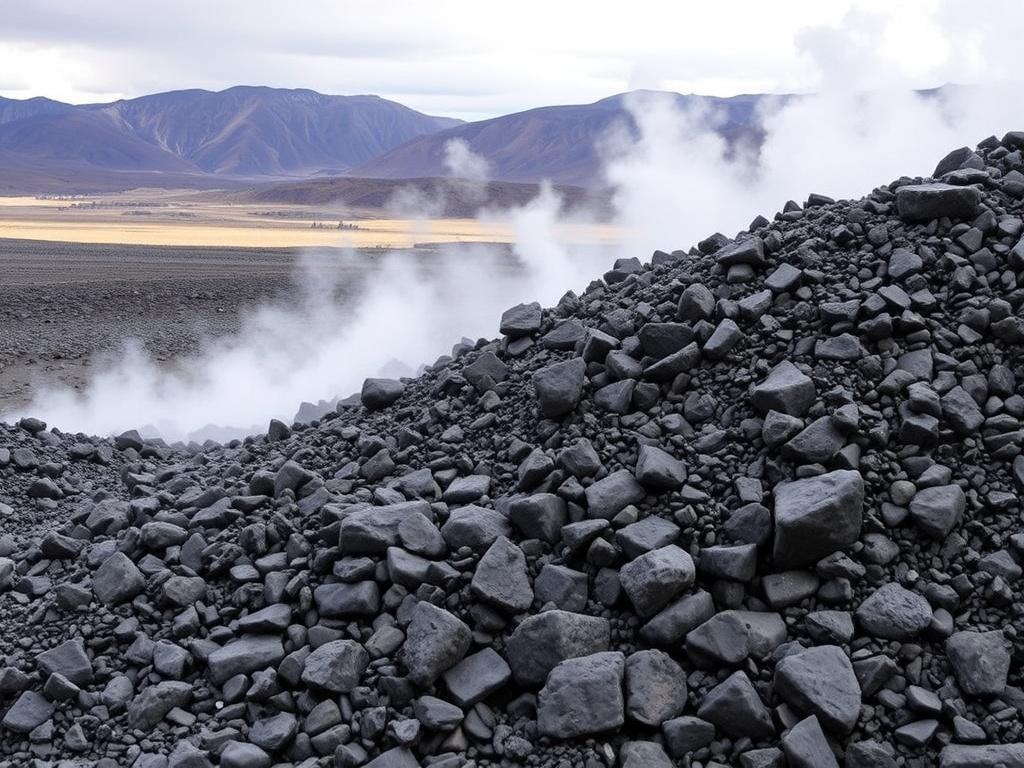- What Is Clean Coal?
- The Technologies Behind Clean Coal
- Carbon Capture and Storage (CCS)
- Integrated Gasification Combined Cycle (IGCC)
- Fluidized Bed Combustion
- Environmental and Economic Impacts
- Reduction of Air Pollutants
- Lowering Carbon Emissions
- Economic Considerations
- Public Perception and Political Influence
- Key Arguments from Supporters
- Key Criticisms from Opponents
- Global Case Studies of Clean Coal Technology
- United States
- China
- Australia
- Is Clean Coal the Future of Energy?
- Factors Affecting Clean Coal’s Viability
- Summary Table: Pros and Cons of Clean Coal
- Conclusion
The phrase “clean coal” has become a buzzword in energy discussions worldwide, often portrayed as a promising solution for sustainable energy needs. But what exactly does clean coal mean, and is it truly a viable way to reduce carbon emissions and combat climate change? In this article, we’ll break down the concept of clean coal, explore the technologies involved, examine the environmental implications, and weigh whether it’s a myth or a reality worth embracing. Whether you are an energy enthusiast, an environmentalist, or simply curious about the future of coal, this comprehensive dive will keep you engaged and informed.
What Is Clean Coal?
The term “clean coal” is somewhat misleading because coal by itself is a fossil fuel known for high carbon emissions. Clean coal refers not to a different type of coal but to processes and technologies aimed at reducing the environmental impact of burning coal for energy. These technologies seek to capture pollutants and carbon dioxide or enhance the efficiency of coal combustion to minimize harmful outputs.
Historically, coal has powered industries and homes for centuries, providing a reliable energy source. But with growing concerns about air pollution, acid rain, and global warming, the idea of making coal “clean” gained traction—offering a potential middle ground between traditional coal power and renewable energy sources.
The Technologies Behind Clean Coal
Clean coal technology involves a combination of advanced methods aimed at reducing emissions and increasing efficiency. The main technologies involved include Carbon Capture and Storage (CCS), Integrated Gasification Combined Cycle (IGCC), and fluidized bed combustion. Understanding these technologies is essential to evaluate clean coal’s feasibility.
Carbon Capture and Storage (CCS)
One of the most talked-about clean coal technologies, CCS, involves capturing carbon dioxide produced from burning coal before it enters the atmosphere and then storing it underground in geological formations such as depleted oil fields or deep saline aquifers.
This process generally includes three key steps:
- Capturing CO2 at the power plant or industrial source
- Transporting the captured CO2 via pipelines or ships
- Injecting and storing it safely underground
CCS can potentially reduce up to 90% of CO2 emissions, making it a powerful tool in combating climate change. However, it is still expensive, energy-intensive, and faces logistical and regulatory challenges.
Integrated Gasification Combined Cycle (IGCC)
IGCC technology transforms coal into a synthetic gas (syngas), which is then cleaned of impurities before combustion. The gasification process allows for easier removal of pollutants such as sulfur, mercury, and particulates, resulting in cleaner emissions.
Moreover, IGCC plants can be more efficient than traditional coal plants, producing more electricity per unit of coal burned. They are also considered more compatible with carbon capture technologies because CO2 separation is simpler at the syngas stage.
Fluidized Bed Combustion
This technology burns coal in a bed of suspended particles, which allows for better temperature control and more complete combustion. It can reduce nitrogen oxide and sulfur dioxide emissions by capturing sulfur with additives like limestone.
Fluidized bed combustion is a versatile and effective way to lower emissions but is typically less impactful on carbon dioxide output compared to CCS.
Environmental and Economic Impacts
Coal has long been criticized for its environmental footprint—high greenhouse gas emissions, air pollution leading to respiratory problems, acid rain from sulfur dioxide, and contamination from mining activities. Clean coal technologies aim to mitigate these consequences, but how successful are they in reality?
Reduction of Air Pollutants
Clean coal methods have demonstrated consistent reductions in particulate matter, sulfur oxides (SOx), and nitrogen oxides (NOx) emissions. Technologies like flue gas desulfurization and selective catalytic reduction are common in modern coal plants and remove many harmful pollutants that contribute to smog and acid rain.
Lowering Carbon Emissions
Carbon dioxide emissions remain the primary challenge. While CCS offers a promising avenue for capturing CO2, it is still not widely implemented globally due to several constraints, including high costs and the need for geological storage sites.
To put it in perspective, CO2 emissions from coal plants account for a substantial portion of global carbon output. According to data, the energy sector is responsible for about 73% of global CO2 emissions, with coal power being a dominant contributor.
Economic Considerations
The economic viability of clean coal is a complex issue. The cost to build and operate plants with CCS can be 35-70% higher than traditional coal plants. This impacts electricity prices and makes clean coal less competitive compared to natural gas and renewable energy sources like solar and wind, whose costs continue to fall.
Here’s a simplified comparison in table format:
| Energy Source | Average Cost per MWh (USD) | Carbon Emissions (kg CO2 per MWh) | Key Advantage | Main Drawback |
|---|---|---|---|---|
| Traditional Coal | 60 | 1000 | Reliability and availability | High carbon emissions |
| Clean Coal (with CCS) | 90-120 | 100-150 | Reduced emissions | High cost and complex infrastructure |
| Natural Gas | 50 | 450 | Lower emissions and cost | Still fossil fuel, methane leaks |
| Solar/Wind | 30-50 | 0 | Clean and renewable | Intermittency and storage issues |
Public Perception and Political Influence
One cannot discuss clean coal without acknowledging the role of public opinion and politics. The coal industry has heavily promoted the term “clean coal” to maintain relevance and government support. Meanwhile, environmental groups often criticize the concept as greenwashing—a marketing tactic that disguises an inherently polluting process.
On the political front, countries rich in coal reserves face a challenging dilemma: balancing economic growth, job preservation, and environmental commitments. Some governments have invested heavily in clean coal research and subsidies, while others have shifted focus toward renewables and natural gas.
Key Arguments from Supporters
- Provides a transition path toward low carbon energy
- Protects existing jobs and economies dependent on coal mining
- Technological advancements could lower costs over time
Key Criticisms from Opponents
- Delays investment and adoption of truly renewable energy
- Carbon capture is unproven on large, economic scales
- Environmental risks remain from coal mining and waste
Global Case Studies of Clean Coal Technology
Looking at examples across the globe helps shed light on how clean coal is being implemented—its successes, limitations, and future potential.
United States
The U.S. has been a leader in developing clean coal technologies, with several pilot CCS projects like Petra Nova in Texas. Petra Nova was once the largest carbon capture project but was suspended due to economic reasons and fluctuating oil prices impacting enhanced oil recovery benefits. Nonetheless, the initiative demonstrated technical feasibility.
China
As the world’s largest coal consumer, China is investing heavily in clean coal technology. It operates multiple IGCC plants and CCS demonstration projects in an attempt to reduce air pollution in its rapidly industrializing regions. However, the scale of coal consumption remains enormous, hampering overall emissions reduction.
Australia
Australia, with rich coal deposits and strong environmental regulations, has explored clean coal through government-funded research projects. The country also aims to export clean coal technology alongside its coal resources. Nevertheless, political shifts and public pressure have slowed progress.
Is Clean Coal the Future of Energy?

So, does clean coal represent the bridge to a sustainable energy future, or is it a distracting myth? The answer is nuanced. Clean coal technologies, especially CCS, hold undeniable potential to reduce the carbon footprint of fossil fuel energy. However, high costs, technical challenges, political resistance, and competition from rapidly advancing renewables make a widespread clean coal future uncertain.
Energy experts generally agree that coal without emission controls is unsustainable. But whether clean coal can compete with renewables and phased-out fossil fuels depends on factors like technological breakthroughs, policy incentives, and global climate goals.
Factors Affecting Clean Coal’s Viability
- Technological Innovation: Improving efficiency and lowering costs of CCS and related methods.
- Government Policies: Carbon pricing, subsidies for clean energy, and environmental regulations shape coal’s role.
- Market Forces: Falling prices of solar, wind, and storage technologies continue to reshape energy markets.
- Environmental Awareness: Public and activist pressures accelerate transition to low-carbon alternatives.
Summary Table: Pros and Cons of Clean Coal
| Advantages | Disadvantages |
|---|---|
|
|
Conclusion
Ultimately, clean coal is neither an outright myth nor a guaranteed reality; it exists in a complicated middle ground. While the technologies behind clean coal have made remarkable strides in reducing pollutants and carbon emissions, economic, environmental, and political hurdles continue to limit their broad adoption. For countries heavily reliant on coal, clean coal could serve as a crucial bridge in their energy transition if coupled with strong policy support and ongoing innovation. However, the relentless progress in renewable energy technologies challenges clean coal’s relevance in the long term. In a rapidly changing energy landscape aiming for net-zero emissions, clean coal’s role remains uncertain—demanding honest conversations, continued research, and a balanced energy strategy that prioritizes a sustainable, low-carbon future for all.
Как вам статья?







